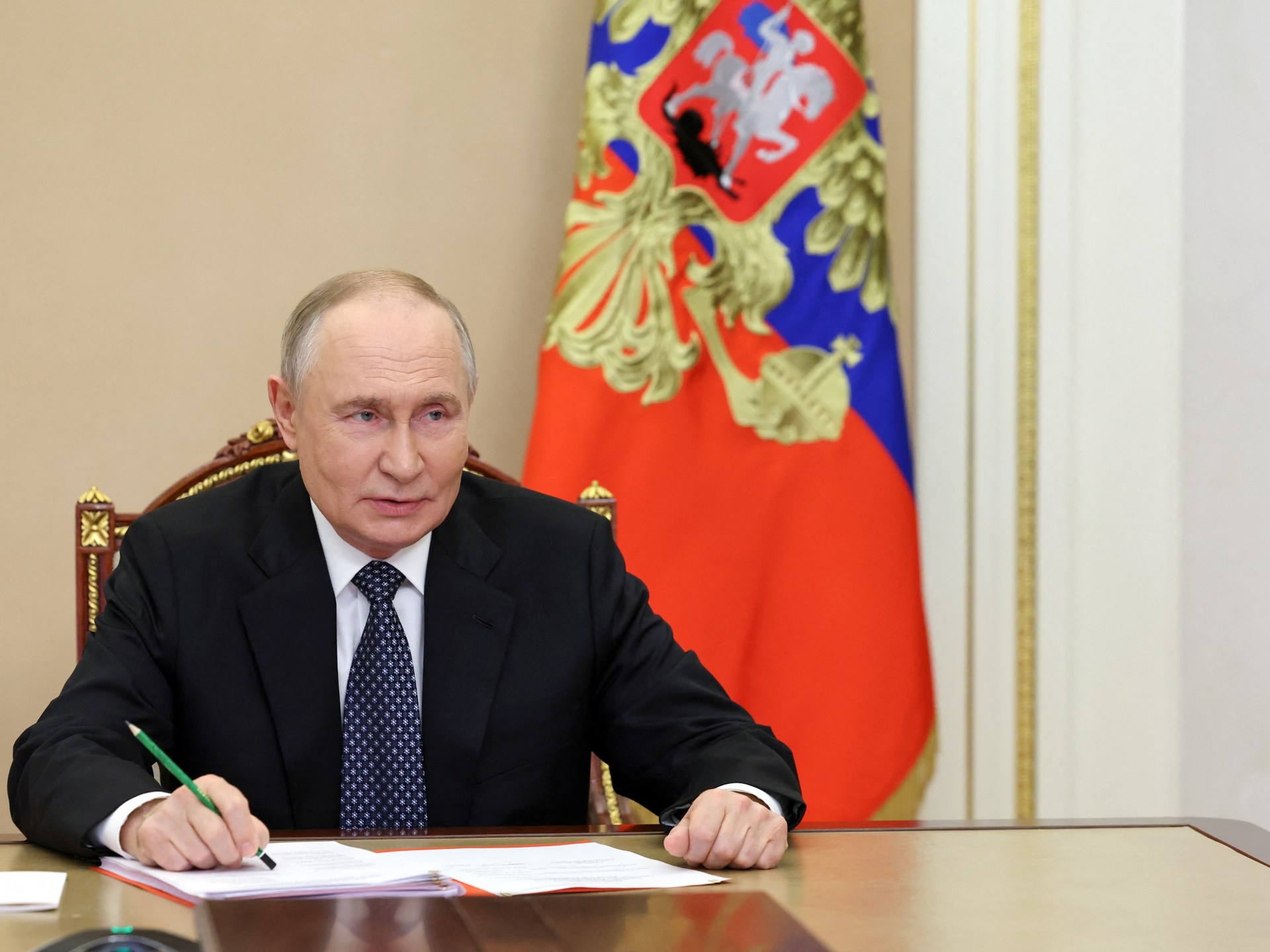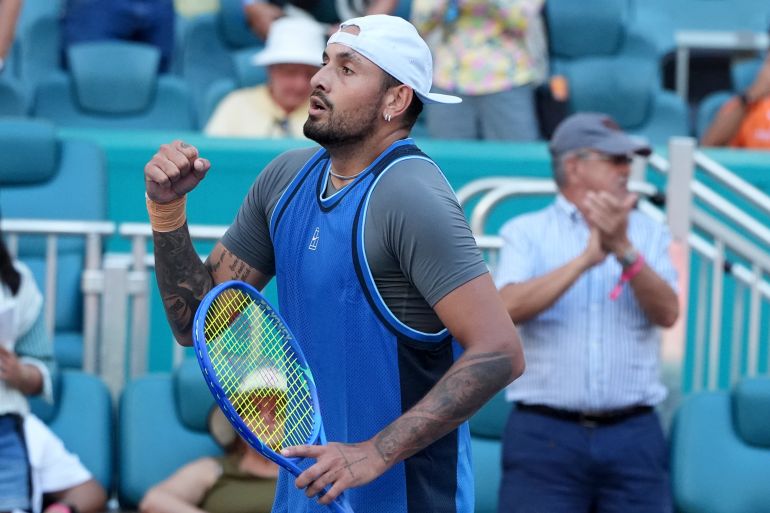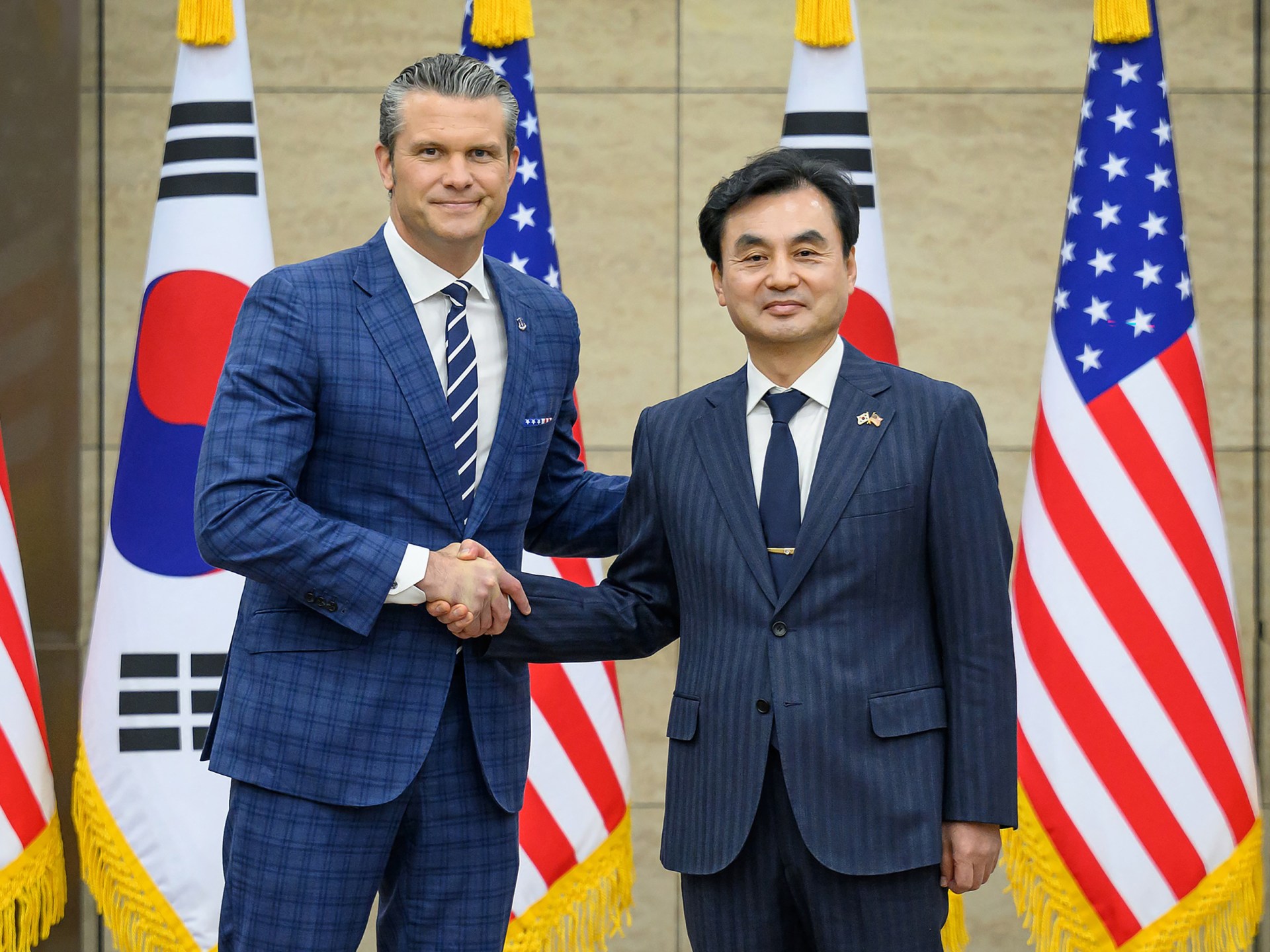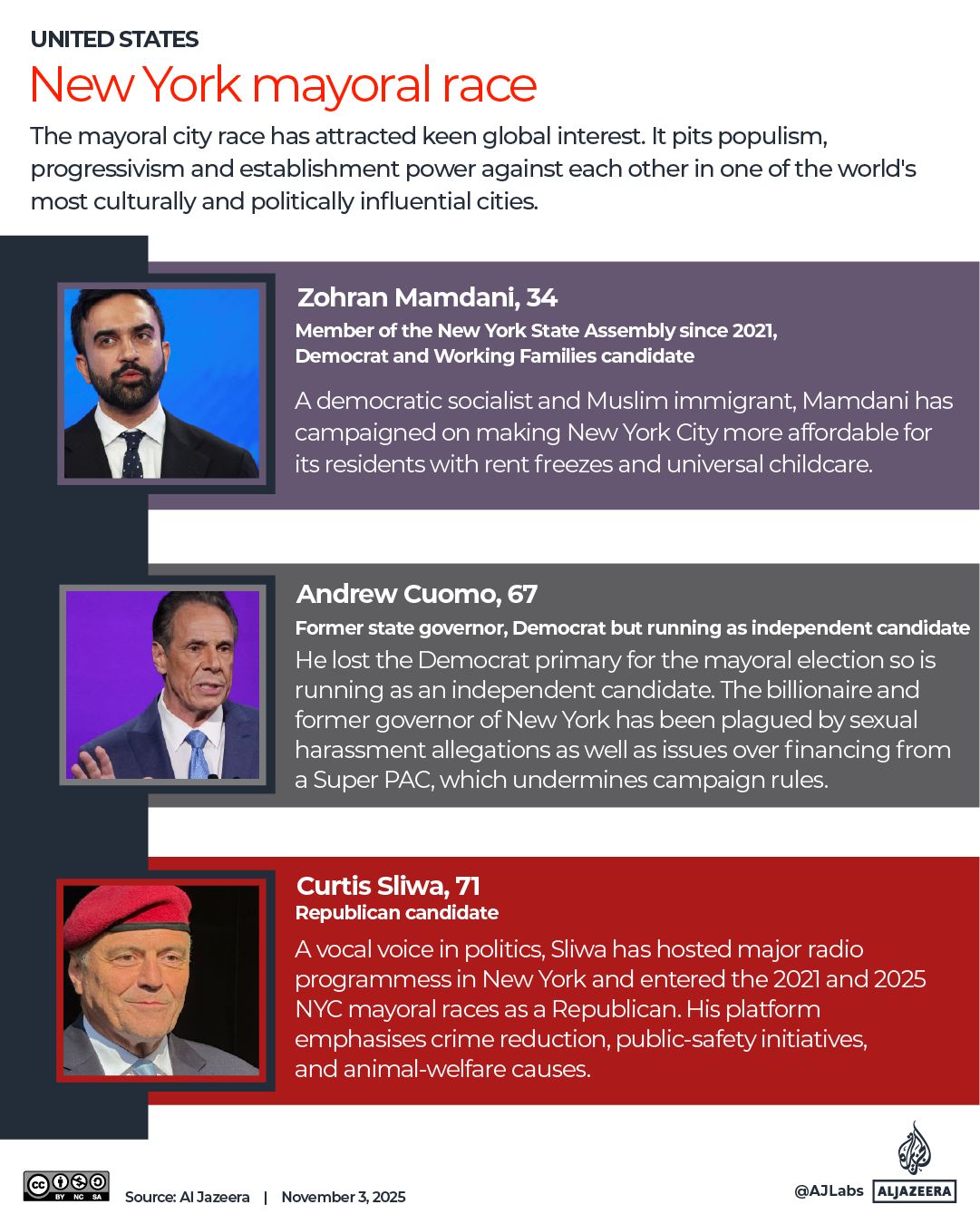Unlike most politicians, Dick Cheney didn’t care if he was liked.
“If you want to be loved, then go be a movie star,” he said in the 2013 documentary, I am Dick Cheney.
That view didn’t stop him from becoming the most powerful vice president in the history of the United States. And it afforded Cheney the thick skin he needed to weather sharp criticism of his tactics during the so-called “war on terror” following the 9/11 attacks on New York and Washington.
Cheney died on Monday, aged 84, due to complications of pneumonia and cardiac and vascular disease, according to a statement issued by his family. He had suffered heart-related problems for much of his adult life.
“Dick Cheney was a great and good man who taught his children and grandchildren to love our country, and to live lives of courage, honor, love, kindness, and fly fishing,” the family said in its statement.
But to millions around the world, he was also a deeply divisive figure, his legacy tainted by bloodshed and chaos following the invasions of Iraq and Afghanistan, lies about Baghdad’s non-existent weapons of mass destruction (WMDs), domestic cyber-snooping and the torture of Guantanamo Bay inmates.
Contemporaries saw him as the power behind the throne of President George W Bush, using his political clout and acumen to dominate his boss and hatch the “war on terror” and other neoconservative plans.
“Cheney has to be counted among the most influential Americans of the last 40 years. He was the consummate bureaucratic operator,” Jake Bernstein, co-author of Vice: Dick Cheney and the Hijacking of the American Presidency, told Al Jazeera.
“He engineered his own selection as vice president and used what was often a ceremonial post to transform US policy. His legacy continues: the surveillance society, the reputational stain of state-sponsored torture, the failure to deal with climate change and the bloat of private military contractors are just a few areas in which his imprint lingers.”
Cheney was born in Nebraska and grew up in Casper, a calm and pleasant oil city in Wyoming, with his hard-working, Democrat-voting parents: Marjorie and Richard Herbert Cheney, a soil management expert.
He abandoned a scholarship at Yale University and fell into a losing streak of blue-collar jobs and drunk-driving tickets, but re-booted his career as a political science scholar and joined the tumult of Washington politics.
He became fellow neoconservative Donald Rumsfeld’s protege. They forged a duo that led Republican administrations for decades — Rumsfeld was Bush’s defense secretary. Observers noted how the two men finished each other’s sentences and dubbed them the Praetorian Guard for their Roman-like disciplined efficacy.
By 1975, Cheney was chief of staff of the Gerald Ford White House, the youngest person to hold the post. Later, as a House Representative for Wyoming, Cheney was a traditionalist voice on abortion, gun control and the environment.
“The smart young congressman, Dick Cheney, was a hit in Washington: a model of the practical, get-things-done conservative and a leader, right out of the box,” Leslie Gelb, former president of the Council on Foreign Relations, a think tank, told Al Jazeera in 2015.
“Over time, he grew convinced that the country needed a hardliner, and he had the credentials to take that posture,” said Gelb, who died in 2019.
Cheney bucked the trend of old-fashioned Republicanism in one key aspect. Mary, the younger of two daughters with his high-school sweetheart and wife, Lynne, is a lesbian. The Cheneys were opposed to banning same-sex marriage.
As secretary of defense under President George HW Bush (1989-93), Cheney scaled back military spending as the Soviet Union fell apart and ran successful campaigns in Panama and against Iraqi leader Saddam Hussein’s forces in Kuwait.
“Back then, he was disciplined, conservative and careful; using additional military strength and limiting a war’s goals so as to accomplish its objectives. He knew that starting a war meant that you also needed to win it,” Michael O’Hanlon, a defence expert at the Brookings Institution, told Al Jazeera.
But that attitude appeared to have changed over the following decade, by the time the US was processing its response to 9/11.
“As vice president, he favoured less careful preparation for the post-Saddam, post-Taliban environments in Iraq and Afghanistan. He used twice as many people to evict Saddam from Kuwait as the George W Bush administration did to overthrow Iraq’s government and then try to stabilise the country afterwards,” O’Hanlon said.
In 1995, with Democrats in the White House, Cheney became CEO of Halliburton. The US oil and engineering firm has been embroiled in controversy over environmental damage and its growing list of US military contracts.
“As CEO of Halliburton, Cheney was a key figure in the early history of the ‘privatised military industry’ that nowadays encompasses hundreds of firms, thousands of employees and billions of dollars in revenue,” Peter Singer, author of Corporate Warriors, told Al Jazeera.
“The privatisation of warfare has allowed startling new capabilities and efficiencies in how war is carried out, but the introduction of the profit motive onto the battlefield raises troubling questions for democracy, ethics, management, human rights and national security.”
September 11, 2001, attacks
Back in the White House in 2001, Cheney brought in his trusted partner, Rumsfeld, as defense secretary, and brought allies in to other tiers of administration.
On September 11 of that year, Cheney was in the White House, deciding whether to shoot down the last airborne hijacked passenger jet, when Bush was reading The Pet Goat with schoolchildren in Florida.
As the US launched regime-toppling attacks on Afghanistan and Iraq, Cheney was implicated in the planning of the wars that ignored facts and — in the case of the conflict in Iraq — the United Nations charter. As the wars dragged on, killing tens of thousands of people, devastating the attacked countries and draining US resources, the criticism mounted. By 2008, when Barack Obama swept to power, the nation’s mood had turned decisively against the wars.
Cheney’s justification for the invasion of Iraq in 2003 – Saddam Hussein’s secret WMDs – turned out to be bogus. Dismantling Iraq’s army and Baath party left the nation ungoverned and prone to the destabilising tactics of al-Qaeda and the ISIL (ISIS) armed groups.
“He was a misfit with his hawkish use of conventional military force in the 21st century, when the enemy was less frequently a traditional nation state, which responds to threats of force, but sub-groups that were not intimidated by US military might,” added Gelb in 2015.
Cheney loved hunting — in 2006, he accidentally shot a Texas lawyer and friend, Harry Whittington, with a hunting shotgun while they were shooting quail. Whittington survived after major operations.
As vice president, Cheney also helped design a 9/11 response that saw increased government cyber-snooping on US citizens and the harsh interrogations of “terrorism suspects” at Guantanamo Bay, Cuba, and a global web of so-called “black sites”.
Even after a Congressional study found that using such “enhanced interrogation” techniques as waterboarding, hooding and sleep deprivation were brutal and ineffective in 2014, Cheney defended his choices.








